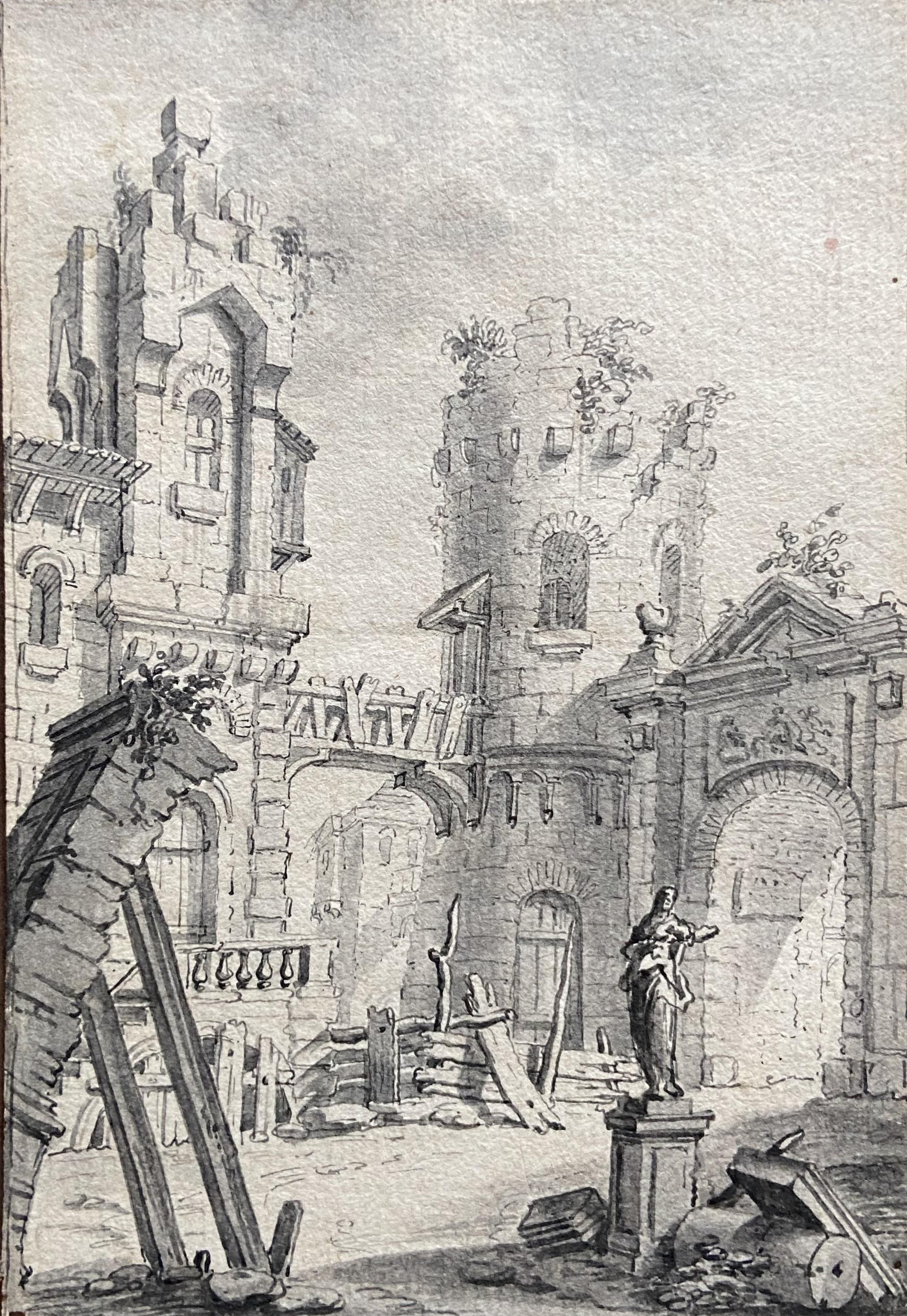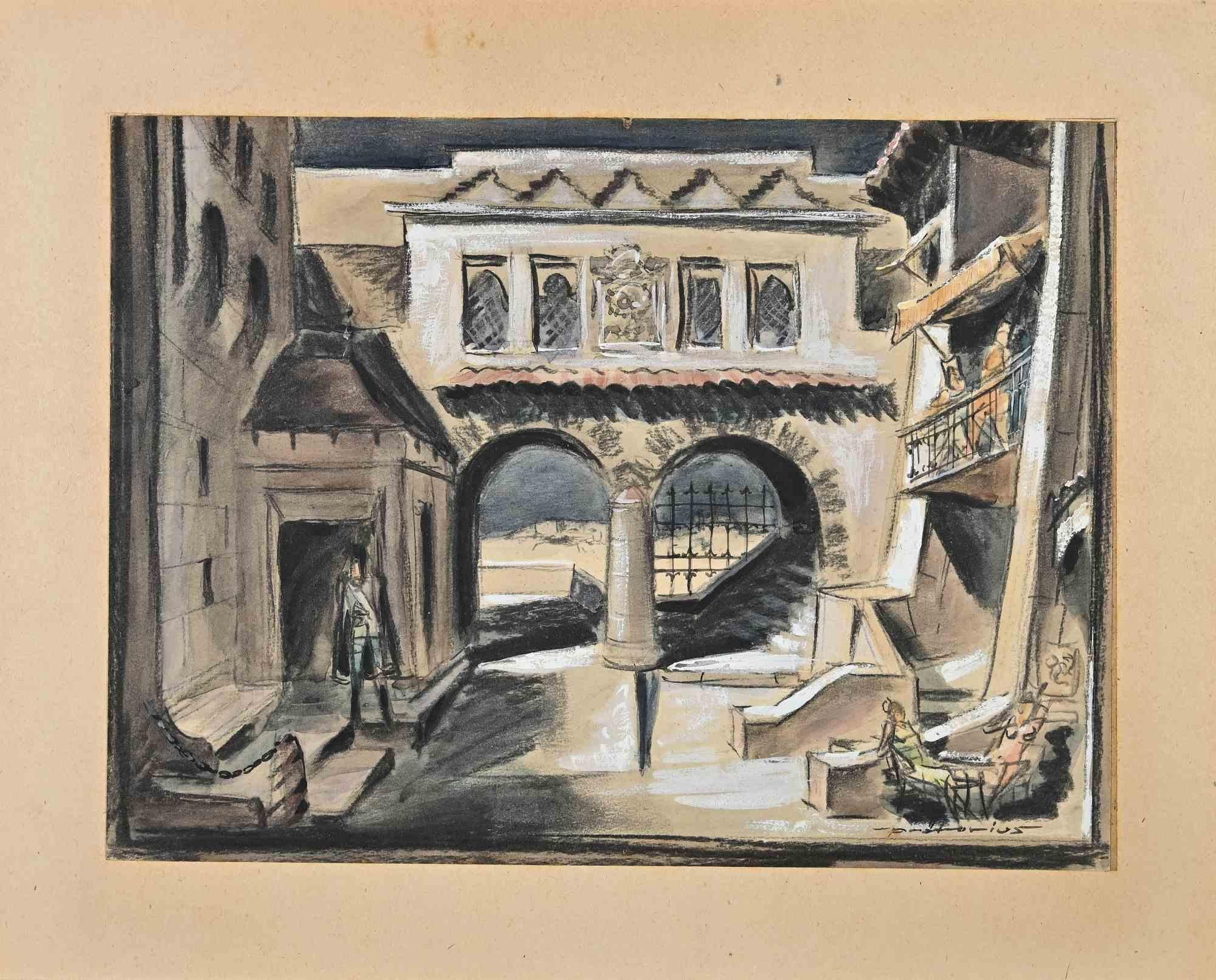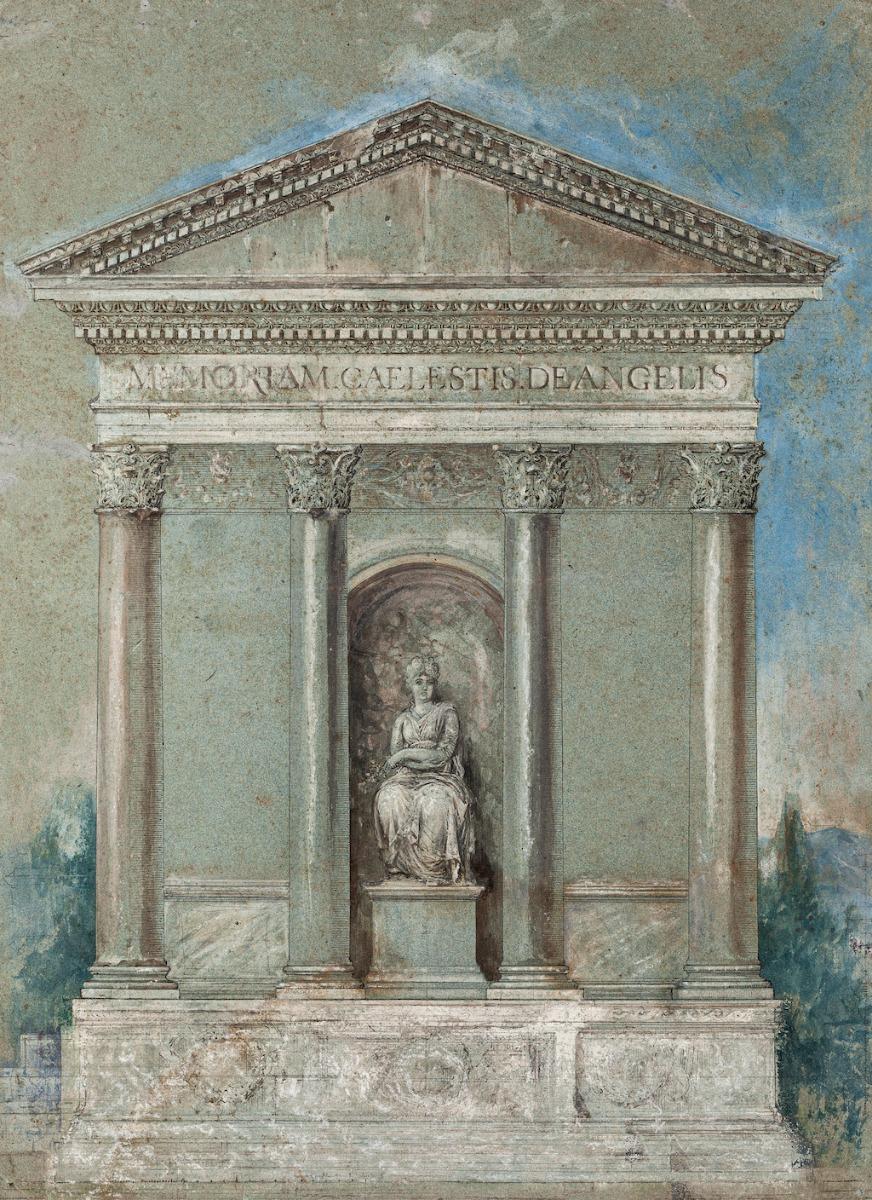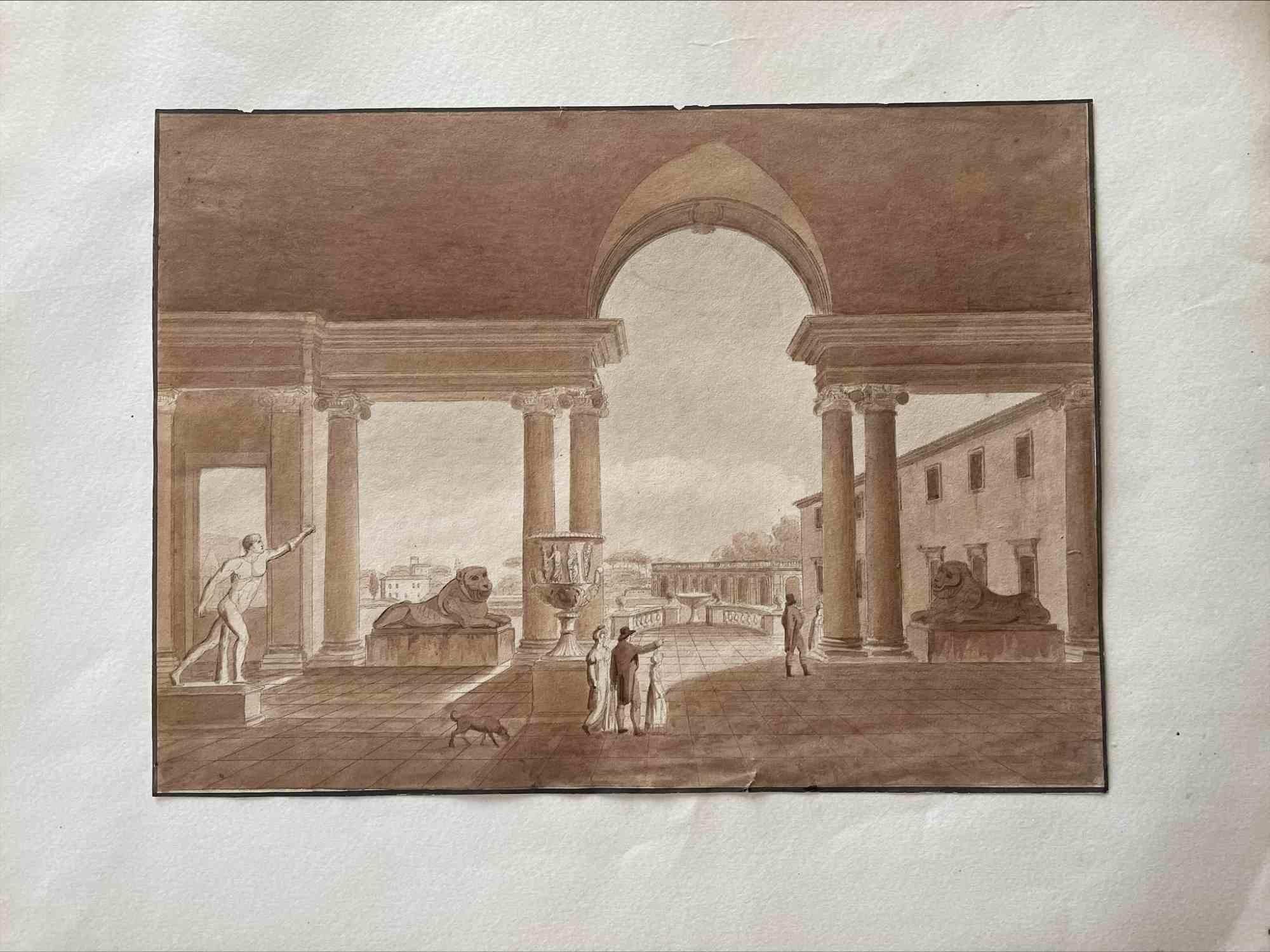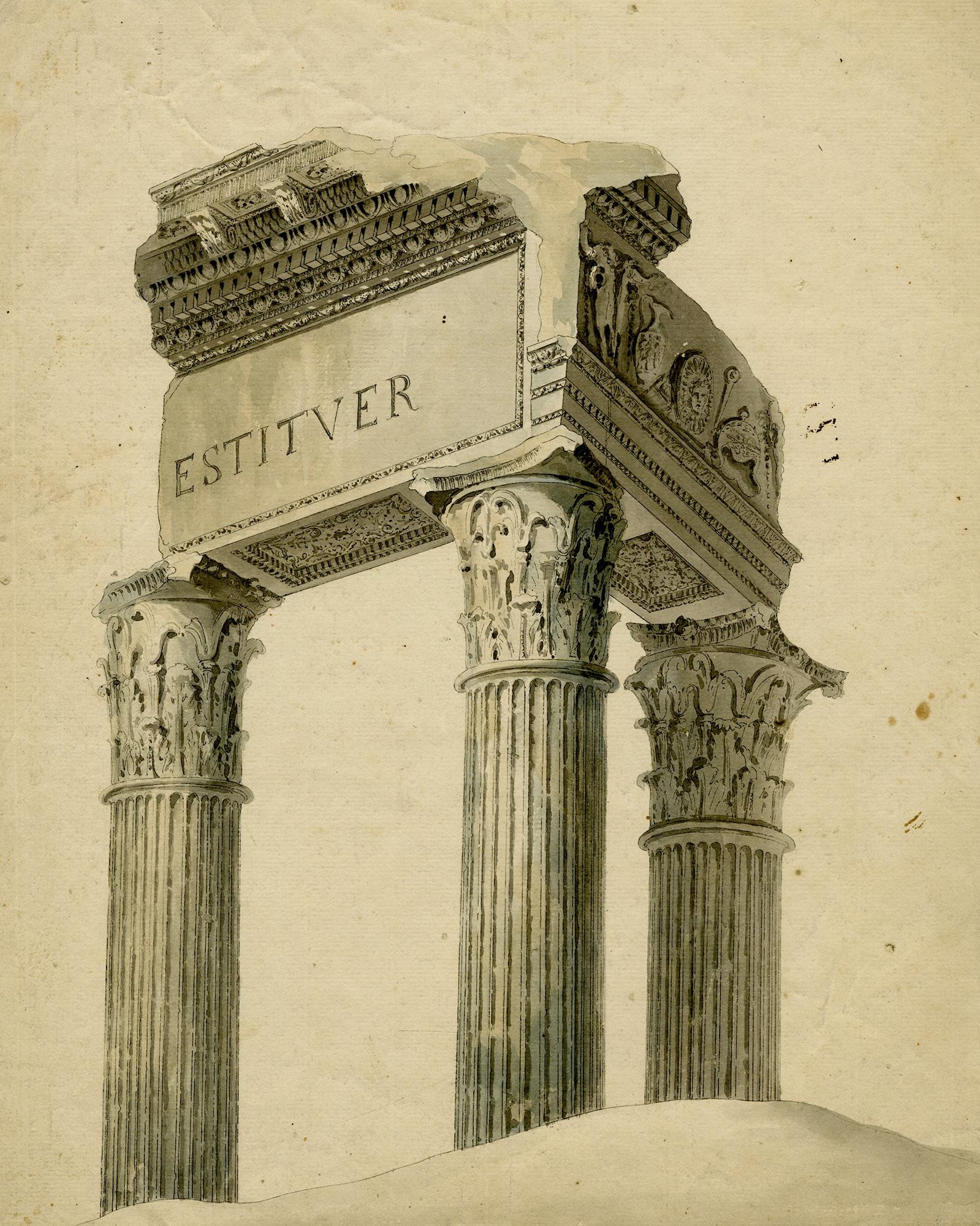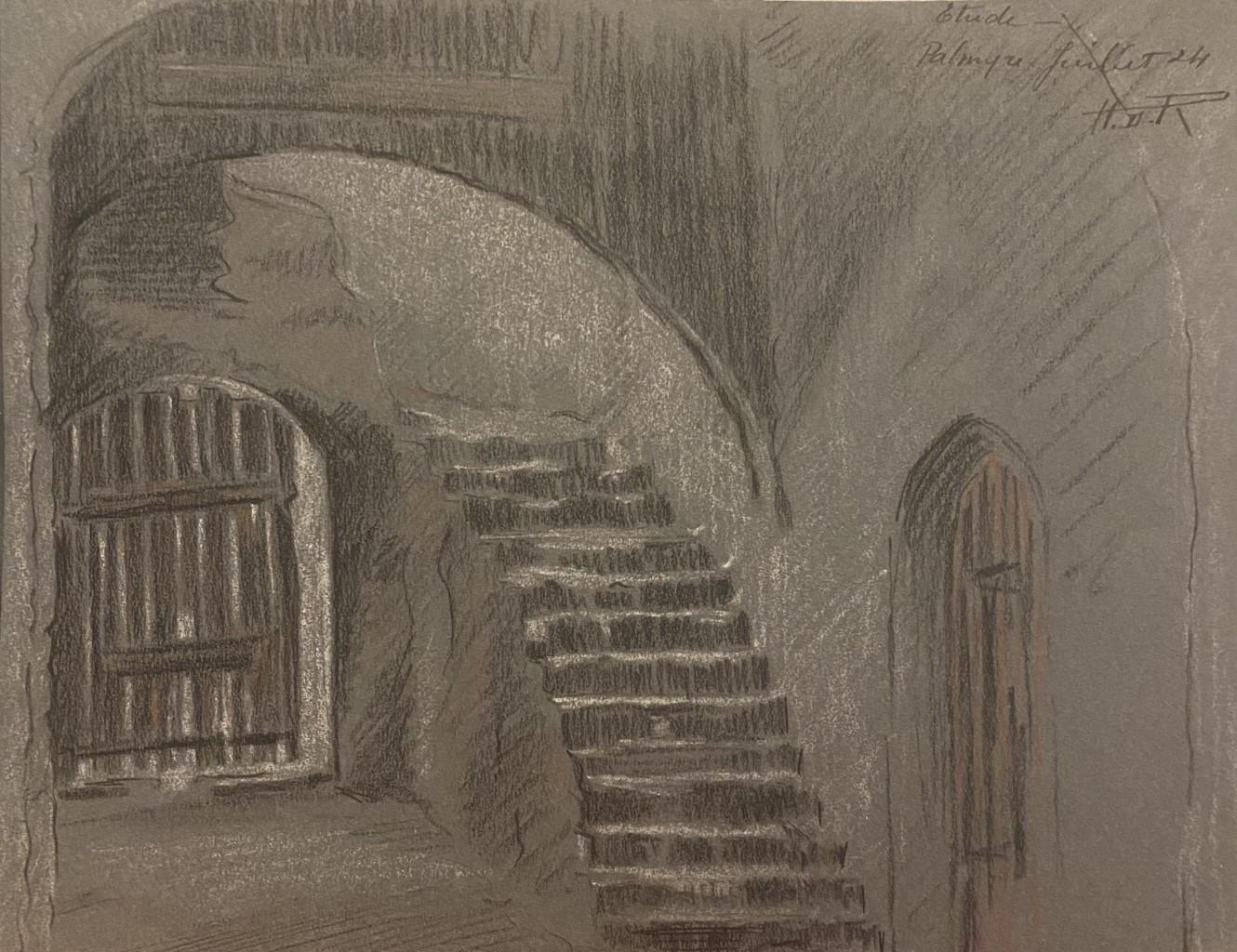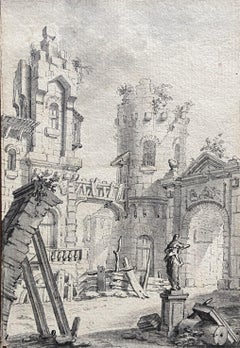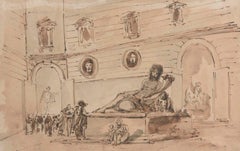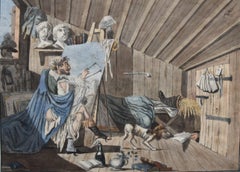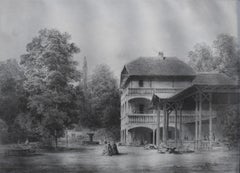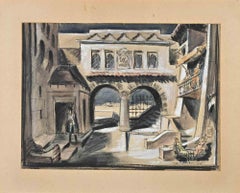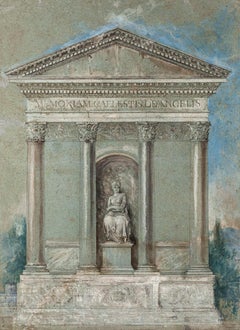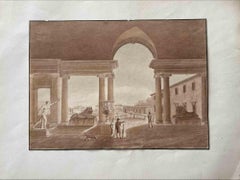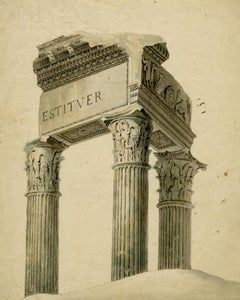Items Similar to French Romantic School, View of a roman atrium, drawing
Video Loading
Want more images or videos?
Request additional images or videos from the seller
1 of 13
UnknownFrench Romantic School, View of a roman atrium, drawingcirca 1850
circa 1850
$939.34
$1,174.1820% Off
£699.15
£873.9420% Off
€784
€98020% Off
CA$1,286.67
CA$1,608.3320% Off
A$1,431.05
A$1,788.8220% Off
CHF 747.25
CHF 934.0720% Off
MX$17,414.42
MX$21,768.0220% Off
NOK 9,543.55
NOK 11,929.4420% Off
SEK 8,950.17
SEK 11,187.7120% Off
DKK 5,968.32
DKK 7,460.4020% Off
Shipping
Retrieving quote...The 1stDibs Promise:
Authenticity Guarantee,
Money-Back Guarantee,
24-Hour Cancellation
About the Item
French Romantic school circa 1850
An antique Roman Atrium
signed lower right (illegible)
Ink, Ink wash and white gouache heightenings
20 x 13 cm
Framed : 35.5 x 27 cm
The signature has not yet been deciphered, but this drawing shows great technical mastery. Every detail is meticulous, such as the vase motifs in the lower left, and the play of light and shadow is equally remarkable, all of which demonstrates the artist's talent.
With the romantic age, writers and artists had a growing interest for the antique roman dailylife, as in the same time, like their public they were less and less interested by the the great Antique, epic and Mythological themes.
With the incredible discoveries of Pompei excavations at the end of the 18the century, for the first time it was possible to imagine the real life of roman people and not only the history of heroes and historical figures.
Painters like Lawrence Alma Tadema (1836-1912) and Jean-Léon Gérôme (1824-1904) were the masters of these depictions, Edward Bulwer-Lytton wrote "The Last Days of Pompei" in 1834, one of the first historical novel.
That's in this cultural mood that this very fine drawing has been conceived, it's very typical of this romantic time.
About the Seller
5.0
Gold Seller
Premium sellers maintaining a 4.3+ rating and 24-hour response times
Established in 2018
1stDibs seller since 2019
248 sales on 1stDibs
Typical response time: 2 hours
- ShippingRetrieving quote...Shipping from: Paris, France
- Return Policy
Authenticity Guarantee
In the unlikely event there’s an issue with an item’s authenticity, contact us within 1 year for a full refund. DetailsMoney-Back Guarantee
If your item is not as described, is damaged in transit, or does not arrive, contact us within 7 days for a full refund. Details24-Hour Cancellation
You have a 24-hour grace period in which to reconsider your purchase, with no questions asked.Vetted Professional Sellers
Our world-class sellers must adhere to strict standards for service and quality, maintaining the integrity of our listings.Price-Match Guarantee
If you find that a seller listed the same item for a lower price elsewhere, we’ll match it.Trusted Global Delivery
Our best-in-class carrier network provides specialized shipping options worldwide, including custom delivery.More From This Seller
View All18th Century School, Courtyard of a palazzo, Architectural Capriccio, drawing
Located in Paris, FR
18th Century french School,
Courtyard of a ruined palazzo, An Architectural Capriccio,
Pen and black ink and black ink wash on paper
17 x 12 cm
In good condition
Framed : 32 x 26 c...
Category
1780s Old Masters Interior Drawings and Watercolors
Materials
Ink
18th Century Roman School , A Palazzo with antiques, drawing
Located in Paris, FR
18th Century Roman School
A Palazzo with antiques
Brown ink and pen, brown ink wash on paper
12.5 x 20 cm
Framed : 28,5 x 35.5
This nice drawing represents a genre scene, with a nobleman, priests, a mother and her children...
Category
Early 18th Century Old Masters Interior Drawings and Watercolors
Materials
Ink
$606 Sale Price
25% Off
France 19th century, The Bohème artist in his workshop, watercolor
Located in Paris, FR
France circa 1850
The Bohème artist in his workshop
Watercolor on paper
15.5 x 21.5 cm
In good condition except a small tear (visible on the photographs) on the upper right border.
I...
Category
1840s Romantic Interior Drawings and Watercolors
Materials
Watercolor
$690 Sale Price
20% Off
19th Century Romantic school, A Pavilion in a garden, original drawing
Located in Paris, FR
Romantic School, circa 1860
A pavilion in a garden , an animated view
Pen and black ink, black ink wash on paper
19.5 x 26.5 cm
In good condition, slightly undulating.
Framed : 39 x ...
Category
1860s Romantic Landscape Drawings and Watercolors
Materials
Ink
$473 Sale Price
30% Off
French school 18th Century, A mytholological scene with a couple, drawing
Located in Paris, FR
French school 18th Century,
A mytholological scene with a couple,
Pen and brown ink, brown ink wash on paper
11.5 x 11.5 cm, diameter of the main scene : 10,5 cm
in a modern frame under glass : 33.5 x 33.5 cm
This drawing by a particularly talented 18th-century artist - as yet unidentified - is notable for its mastery of pen and wash...
Category
1760s Old Masters Figurative Drawings and Watercolors
Materials
Ink
$881 Sale Price
20% Off
French Romantic School, View of Arriccia, 1828, drawing
Located in Paris, FR
French Romantic School beginning of the 19th Century
View of Arriccia, 1828
located and dated, "Arriccia 1828" on the lower right
Pencil on paper
23 x ...
Category
1820s Romantic Landscape Drawings and Watercolors
Materials
Pencil
$891 Sale Price
20% Off
You May Also Like
Interior - Original drawing by Ludwig Max Praetorius - Late-19th Century
Located in Roma, IT
Interior is an Original drawing in ink, charcoal and watercolor realized in the late 19th Century by Ludwig Max Praetorius (1813-1887).
Good conditions.
The artwork is depicted thr...
Category
Late 19th Century Modern Figurative Drawings and Watercolors
Materials
Watercolor, Charcoal, Ink
Neoclassical Architecture - Ink, Pastel and Watercolor - 19th Century
Located in Roma, IT
"Architecture" is an original drawing in mixed media on cardboard, by Anonymous Artist of XIX Century.
In aged conditions.
Sheet dimension: 73 x 54 cm
This is an original drawing ...
Category
19th Century Figurative Drawings and Watercolors
Materials
Mixed Media, Pastel, Ink, Watercolor
$1,617 Sale Price
25% Off
Palazzo Farnese - Drawing - 19th Century
Located in Roma, IT
Palazzo Farnese is an artwork of the 19th century.
Watercolour on paper.
The evocative representation of a lodge in the garden of the palazzo Farnese in Rome, the artist depicts t...
Category
19th Century Modern Abstract Drawings and Watercolors
Materials
Paper, Watercolor
A Grand Tour study of ruins in the Roman Forum - English School, early 19th C.
Located in Middletown, NY
Ink and wash in black ink with pen in black ink on watermarked C & I Honig cream laid paper, 14 7/8 x 12 1/4 inches (378 x 311 mm), the full sheet. In very good condition with some m...
Category
Early 19th Century French School Landscape Drawings and Watercolors
Materials
Handmade Paper, Ink
Interior of a House - Original Mixed Media Drawing - 19th Century
Located in Roma, IT
"Interior of a House" is an original pencil, china ink and pastels drawing on ivory paper by Anonymous Artist of XIX Century.
In very good condit...
Category
19th Century Modern Figurative Drawings and Watercolors
Materials
Pencil, Pastel, Ink
Interior of the Parthenon - Lithograph - 1862
Located in Roma, IT
Interior of the Parthenon is a lithograph on paper realized in 1862.
The artwork belongs to the Suite Uses and customs of all the peoples of the universe: " History of the governmen...
Category
1860s Modern Figurative Prints
Materials
Lithograph
